
Ping Lab | Nano/Bio Interfaces & Applications
2024
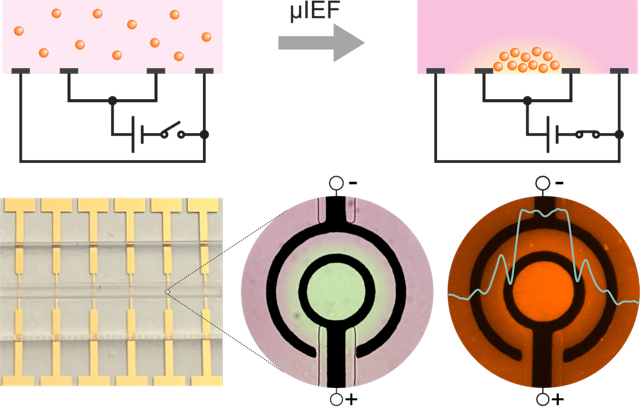
On-Chip Microscale Isoelectric Focusing Enhances Protein Detection Limit
Enhancing the detection limit in protein analysis is essential for a wide range of biomedical applications. In typical fluorescent protein assays, this limit is constrained by the detection capacity of the photon detector. Here, we develop an approach that significantly enhances the protein detection threshold by using microscale isoelectric focusing implemented directly at the detection site on a protein sensor chip. We demonstrate that by electrically generating a localized pH environment within a radius of ∼60 μm, protein molecules can be concentrated within this range and be detected at levels over four times lower than those achieved by measurements without on-chip isoelectric focusing. We find that this detection-limit enhancement results from a dual effect: the concentrating of the protein molecules and a reduction in the diffusion-induced fluctuation. Our approach offers a simple, yet highly effective ultra-low-power all-electronic solution for substantially improving protein analysis detection limits for diverse applications, including healthcare, clinical diagnostics, and therapeutics.
The work is published in APL, selected as a Featured Article, and reported in Scilight.
2023
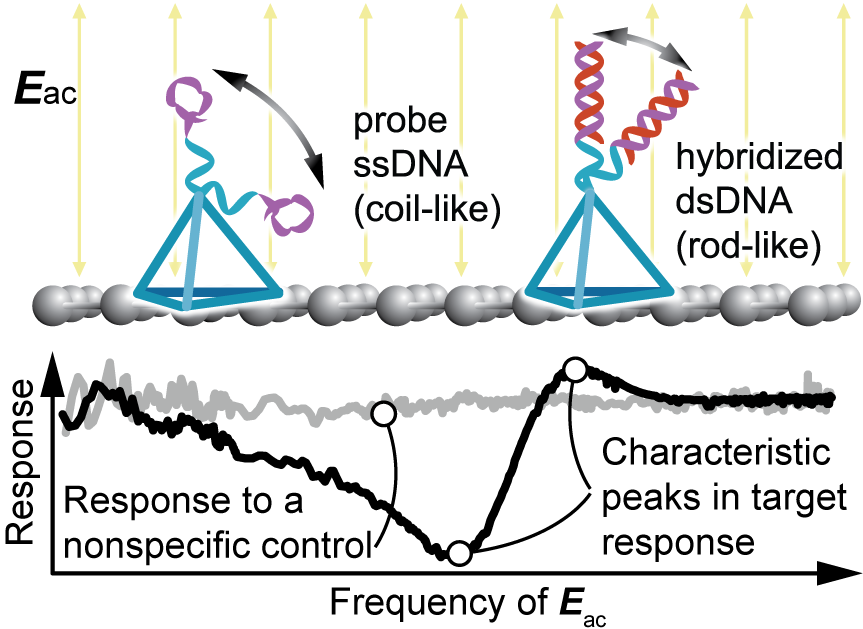
Nanomechanoelectrical Approach to Highly Sensitive and Specific Label-Free DNA Detection
Find your graphene-transistor DNA sensors not senstive and specific enough? Check out this paper published in PNAS.
We demonstrate a nanomechanoelectrical approach that delivers ultra-robust specificity and a 100-fold improvement in detection limit. We drive nanostructural DNA strands tethered to a graphene transistor to oscillate in an alternating electric field and show that the transistor-current spectra are characteristic and indicative of DNA hybridization. We find that the inherent difference in pliability between unpaired and paired DNA strands leads to the spectral characteristics with minimal influence from nonspecific electrostatic and electrochemical interactions, resulting in high selectivity and sensitivity.
The work has been reported by phys.org, Technology Networks, etc.
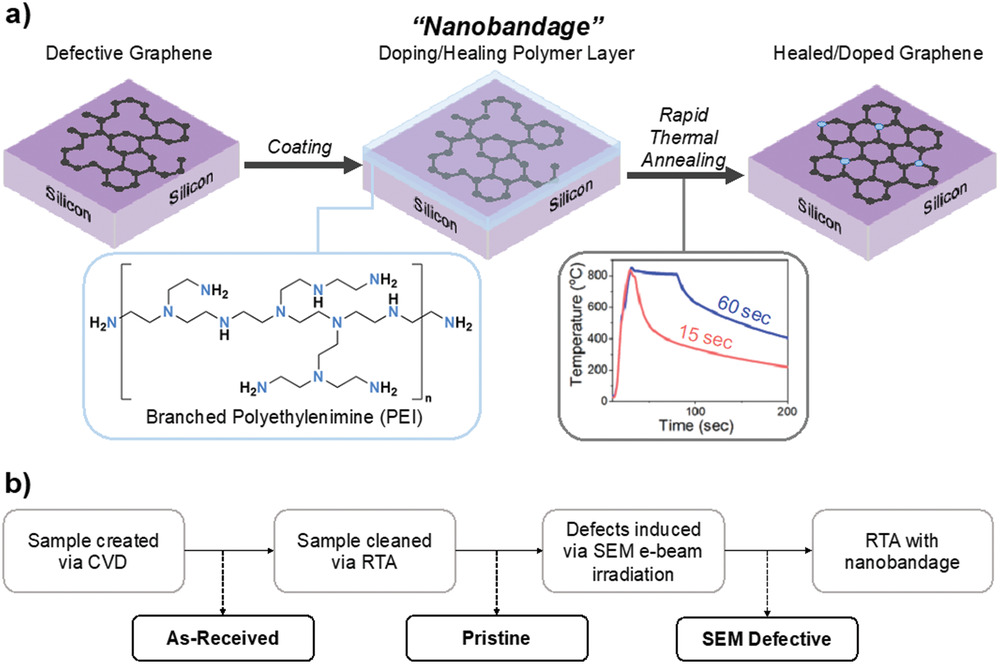
Defect Healing in Graphene via Rapid Thermal Annealing with Polymeric “Nanobandage”
Overcoming throughput challenges in current graphene defect healing processes, such as conventional thermal annealing, is crucial for realizing post-silicon device fabrication. In our collaborated paper with Dr. Katsumata's group, a new time- and energy-efficient method for defect healing in graphene is reported, utilizing polymer-assisted rapid thermal annealing (RTA). In this method, a nitrogen-rich, polymeric “nanobandage” is coated directly onto graphene and processed via RTA at 800 °C for 15 s. Electrical transport measurements indicate that the nanobandage treatment recovers the conductivity of scanning electron microscope-treated defective graphene at ≈85%. The reported polymer-assisted RTA defect healing method shows promise for healing other 2D materials with other dopants by simply changing the chemistry of the polymeric nanobandage.
The paper was published in Small.
2022
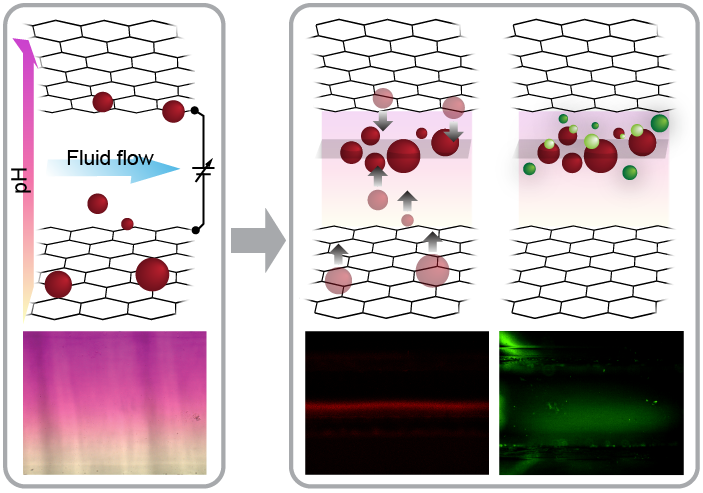
Graphene-Enabled High-Performance Electrokinetic Focusing and Sensing
Transverse isoelectric focusing (isoelectric focusing that is normal to the fluid-flow direction) is an electrokinetic method ideal for micro total analysis. However, a major challenge remains: There is no electrode system integrable in a microfluidic device to allow reliable transverse isoelectric focusing and electrokinetic sensing. We overcome this barrier by developing devices that incorporate microelectrodes made of monolayer graphene. We find that the electrolysis stability over time for graphene microelectrodes is >1000 times improved compared to typical microfabricated inert-metal microelectrodes. Through transverse isoelectric focusing between graphene microelectrodes, within minutes, specific proteins can be separated and concentrated to scales of ∼100 μm. We also develop a three-dimensional multistream microfluidic strategy for label-free detection of the proteins at same processing position with a sensitivity that is ∼100 times higher than those of the state-of-the-art label-free sensors.
The paper was published in ACS Nano. The work has been reported by Azonano, nanowerk, phys.org, and Science Daily.
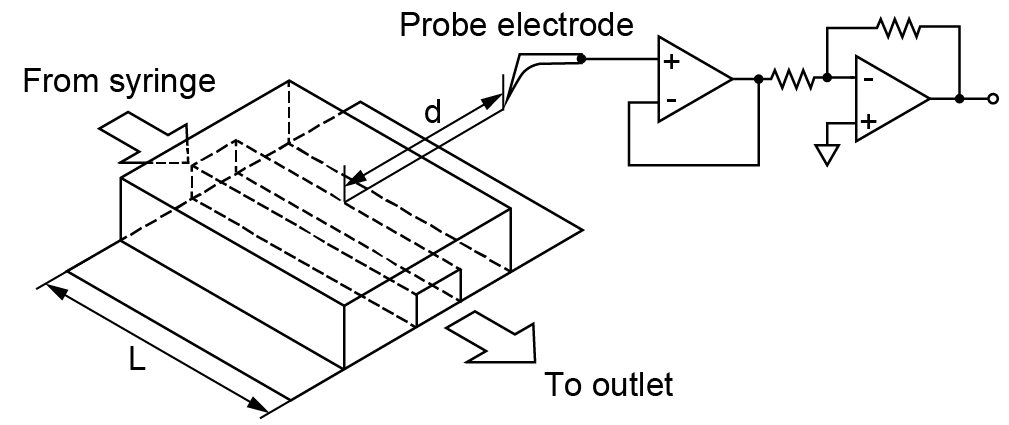
Electrical Contactless Microfluidic Flow Quantification
Precise sensing of microfluidic flow is essential to advancing lab-on-a-chip development and the downstream medical applications. Contactless microfluidic flow interrogation is noninvasive, nonperturbative, and fouling-free. However, known real non-contact flow sensing technologies are limited to quantifying bulk fluids. We develop an electrical approach to contactless quantification of aqueous microfluidic flow. Remarkably, by using a monolayer-graphene coated probe electrode, in comparison with a typical bare probe electrode, an overall enhancement in flow-sensory resolution of 36.4% is attained.
The paper was published in Applied Physics Letters.
2021
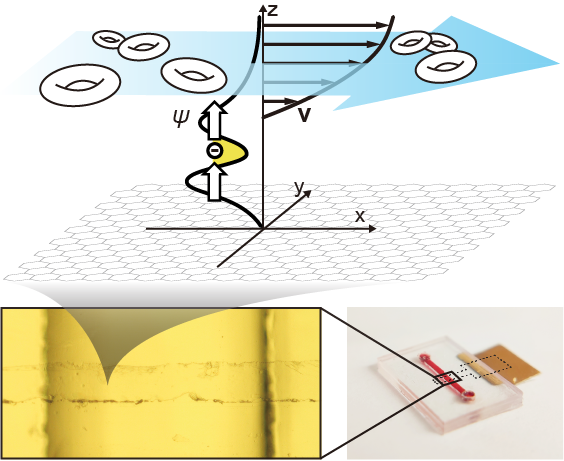
Flow Sensor with Micrometer per Second Sensitivity and over Six-Month Stability
All-electronic interrogation of biofluid flow velocity by electrical nanosensors incorporated in ultra-low-power or self-sustained systems offers the promise of enabling multifarious emerging research and applications. However, existing nano-based electrical flow sensing technologies remain lacking in precision and stability and are typically only applicable to simple aqueous solutions or liquid/gas dual-phase mixtures, making them unsuitable for monitoring low-flow (~micrometer/second) yet important characteristics of continuous biofluids (such as hemorheological behaviors in microcirculation). We show that monolayer-graphene single microelectrodes harvesting charge from continuous aqueous flow provide an effective flow sensing strategy that delivers key performance metrics orders of magnitude higher than other electrical approaches. In particular, over six-months stability and sub-micrometer/second resolution in real-time quantification of whole-blood flows with multiscale amplitude-temporal characteristics are obtained in a microfluidic chip.
The paper was published in Nature Communications. The work has been reported by Institution of Mechanical Engineers, nanowerk, phys.org, and Science Daily.
2020
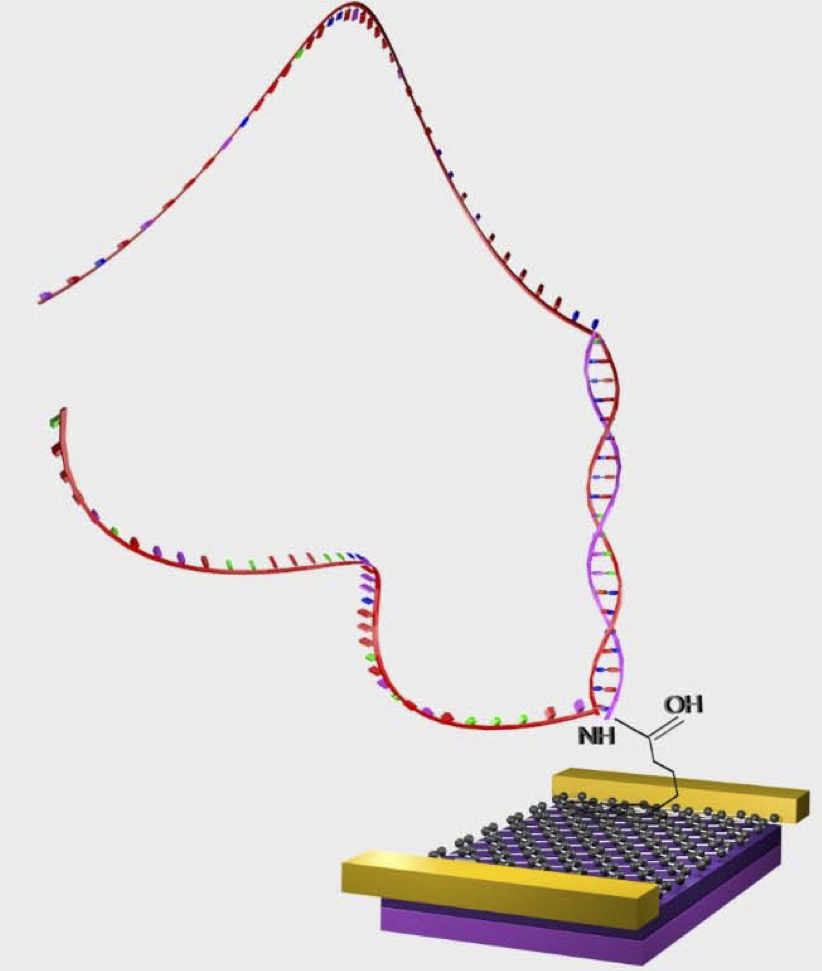
Attomolar Dectection of Single-Strand DNA withoug Amplification
Graphene-based biosensors can be produced in a scalable manner at reasonable cost, and they show significant promise for sensitive detection of small molecules and biomarkers such as proteins, single strand nucleic acids, and drug targets. We developed an approach that enables a limit of detection of ~1 aM for a ssDNA target without amplification. We show that a sensor based on a short (20mer) probe complementary to a portion of a longer (100mer) target provides enhanced sensitivity and saturation signal level. The graphene-based DNA biosensors can be repeatedly recycled with consistent sensor responses by melting off bound target strands. These results show the potential utility of this technology in nucleic acid detection for disease diagnostics.
The paper was published in IEEE Sensors.
2019
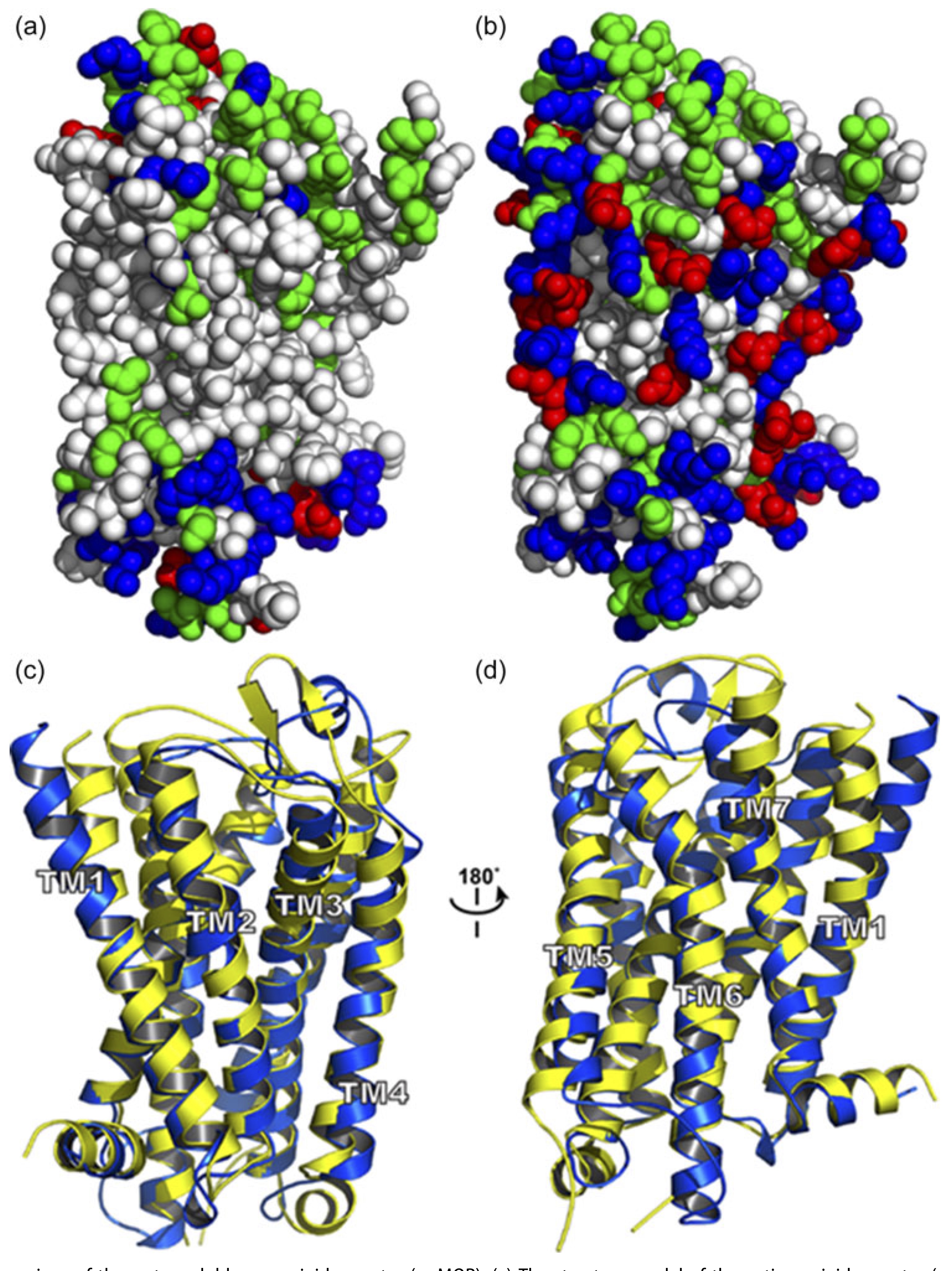
Characterization of an Engineered Water-Soluble Variant of the Full-Length Human Mu Opioid Receptor
This study explored whether the full-length version of the engineered water-soluble receptor, (wsMOR-FL), could be overexpressed in Escherichia coli and if it would retain water solubility, binding capability and thermostability. The wsMOR-FL was characterized using atomic force microscope for its monomeric state, circular dichroism for its secondary structure and thermostability. This study demonstrated that functional full-length water-soluble variant of human mu receptor can be over-expressed and purified using an E. coli over-expression system. This provides a novel tool for the investigation of structural and functional properties of the human MOR. N- and C-termini strengthened the thermostability of the protein in this specific water soluble variant.
The paper was just published as an express communication in Journal of Biomolecular Structure and Dynamics.
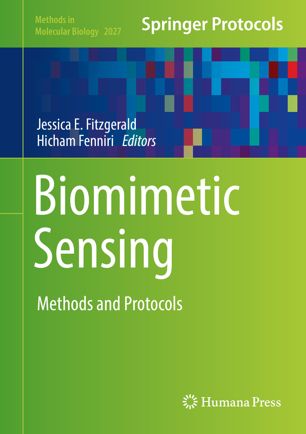
Scalable Arrays of Chemical Vapor Sensors Based on DNA-Decorated Graphene
Arrays of DNA-functionalized graphene field-effect transistors (gFETs) hold great promise for high-performance vapor sensing. In this chapter, we describe methods for the scalable production of gFET-based vapor sensors with high sensitivity and efficiency in size, cost, and time. Large-area graphene sheets were prepared via chemical vapor deposition (CVD); a standard photolithographic processing for large-area graphene was used to fabricate gFETs with high mobility and low doping level under ambient conditions. The gFETs were functionalized by single-stranded DNA (ssDNA), which binds to the graphene channels through π–π stacking interaction and provides affinity to a wide range of chemical vapors. The resulting sensing arrays demonstrate detection of target vapor molecules down to parts-per-million concentrations with high selectivity among analytes with high chemical similarity including a series of carboxylic acids and structural isomers of carboxylic acids and pinene.
The book chapter about chemical vapor sensors was just published in Springer.
2018
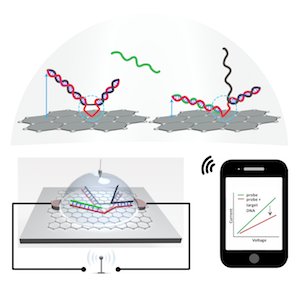
DNA Nano-Tweezers and Graphene Transistor Enable Label-Free Genotyping
Electronic DNA-biosensor with a single nucleotide resolution capability is highly desirable for personalized medicine. We used DNA-tweezers with graphene FET for SNP detection and transmitted data for analysis by wireless. Picomolar sensitivity of quantitative SNP detection was achieved by observing changes in Dirac point shift and resistance change. The use of DNA-tweezers probe with high quality graphene FET significantly improves analytical characteristics of SNP detection by enhancing the sensitivity more than 1,000-fold in comparison to published work of the same type. The electrical signal resulting from resistance changes triggered by DNA strand-displacement and related changes in the DNA geometry was recorded and transmitted remotely to personal electronics. Practical implementation of this enabling technology will provide cheaper, faster and portable point-of-care molecular health status monitoring and diagnostic devices.
The paper was accepted by Advanced Materials and highlited on Advanced Science News.
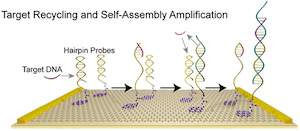
Detection of Sub-fM DNA with on-Chip Target Recycling and Self-Assembly Amplification
For sensors based on DNA-functionalized graphene field-effect transistors (GFETs), the sensitivity is limited by the binding affinity of the target oligonucleotide, in the nM range for 20 mer targets. We report a ∼20 000× improvement in sensitivity through the use of engineered hairpin probe DNA that allows for target recycling and hybridization chain reaction. This enables detection of 21 mer target DNA at sub-fM concentration and provides superior specificity against single-base mismatched oligomers. The work is based on a scalable fabrication process for biosensor arrays that is suitable for multiplexed detection. This approach overcomes the binding-affinity-dependent sensitivity of nucleic acid biosensors and offers a pathway toward multiplexed and label-free nucleic acid testing with high accuracy and selectivity.
The paper was published in Nano Letters.
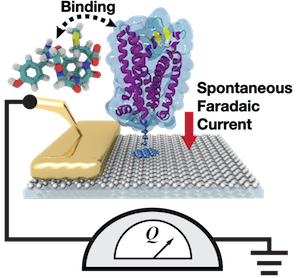
All-Electronic Quantification of Neuropeptide-Receptor Interaction Using a Bias-Free Functionalized Graphene Microelectrode
Opioid neuropeptides play a significant role in pain perception, appetite regulation, sleep, memory, and learning. Advances in understanding of opioid peptide physiology are held back by the lack of methodologies for real-time quantification of affinities and kinetics of the opioid neuropeptide-receptor interaction at levels typical of endogenous secretion (~pM) in biosolutions with physiological ionic strength. To address this challenge, we developed all-electronic opioid-neuropeptide biosensors based on graphene microelectrodes functionalized with a computationally redesigned water-soluble μ-opioid receptor. We used the functionalized microelectrode in a bias-free charge measurement configuration to measure the binding kinetics and equilibrium binding properties of the engineered receptor with [D-Ala2, N-MePhe4, Gly-ol]-enkephalin and β-endorphin at pM-level in real time.
The paper was published in ACS Nano.
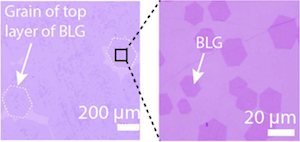
Growth of Bilayer Graphene with High Scalability and Crystallinity
Previously reported approaches for growth of bi-layer graphene (BLG) include flat growth substrates of Cu and Ni–Cu uniform alloys and "copper pocket" structures, which suffers from either growth of multicrystalline BLG byproduct and low scalability respectively. We used a Ni–Cu gradient alloy to graphene with both high scalability and crystallinity. The BLG layer stacking was almost exclusively Bernal or twisted with an angle of 30°, consistent with first-principles calculations.
The paper was published in ACS Nano.
2017
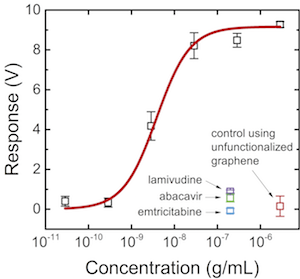
Graphene-Based Sensor Rapidly Detects HIV Drug in Nanoscale Concentrations
Typical medical tests for biomarkers and drugs rely on liquid chromatography-mass spectrometry (LC-MS), an expensive, slow technique that often requires external lab analysis, making it not suitable for point-of-care use. We developed rapid (~ min), inexpenisve (< $2/test) apatsensors based on graphene field-effect transistors to detect anti-HIV drug, whic paves the way for new methods of measuring these markers with high efficency in cost and time.
The paper was published as a featured article in AIP advances, as well as highlighted by Scilight.
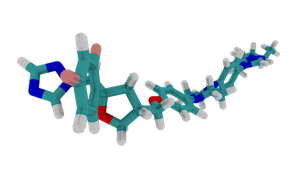
An Aptamer-biosensor for Azole Class Antifungal Drugs
DNA-based aptamers hold great promise to serve as the recgonizer of biosensors. We developed a methodlogy for scallable production of biosensors based on graphene-aptamer hybrids, paving the way for point-of-use theraputic drug detection.
The paper was published in mSphere.
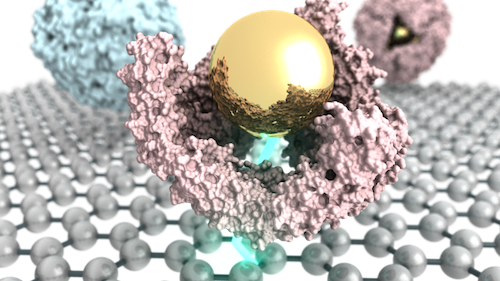
Structural-Functional Analysis of Engineered Protein-Nanoparticle Assemblies Using Graphene Microelectrodes
Nanoparticle-driven current is measured with a graphene electrode to quantify the pore-size of the ferritin enclosing the nanoparticle. It was found that for open-pore ferritin, the size and shape of the pore is very likely to be retained when a gold nanoparticle is enclosed in the cage. This research first characterized the structure and function of protein-nanoparticle assemblies in solution and implies the potential of using graphene-based charge measurement technology to develop low-cost high-sensitivity disease diagnostic systems.
The paper was published in Chemical Science and selected as one of the two HOT articles in Chemical Science Blog. It was also highlighted by myScience, Medium, TrendinTech, Penn News, etc.
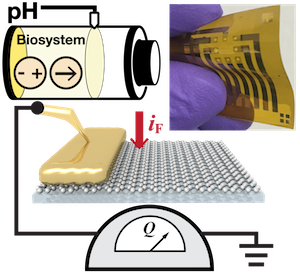
Bias-free Quantifying Human Serum pH Using Graphene Microelectrode
Intrinsic Faradaic charge follows into flexible graphene microelectrode in the absence of any bias. The characteristic current responds sensitively and rapidly to pH variation of complex biofluids. The results shed light on the polarity of the electrical double layer above graphene and pave the way for early cancer diagnosis via extracelluar pH monitoring.
The paper was published in Small.
2016
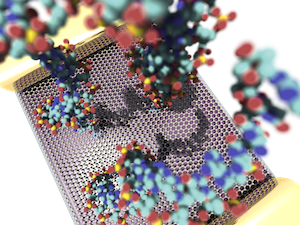
DNA Biosensors with Record-Breaking Sensitivity
I developed a methodology for scalable production of graphene-based DNA biosensor array with record-braking sensitivity 1 fM. That is, ~60,000 DNA molecules in a 1 mL drop of solution, or, one grain of salt (1g) dissolve into 6,800,000 international standard swimming pool.
The paper was published in ACS Nano.
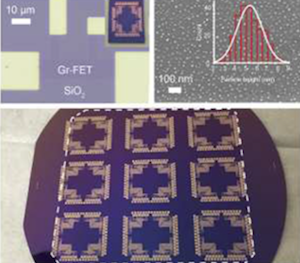
Scalable Production of Nanohybrid Biosensors
We developed a scallable production method for four-probe transistor arrays with a novel configuration that comprises nano-bio hybrids of DNA, monodisperse gold nanoparticles (AuNPs), and graphene.
The paper was published in ACS Applied Materials and Interfaces.
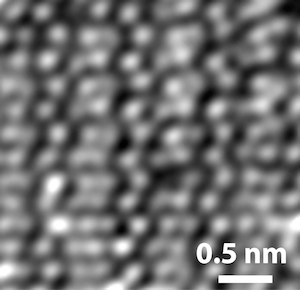
Scalable Preparation of MoTe2 Monolayers in 1T'-Phase
MoTe2 monolayers with size ~102 were prepared with chemical vapor depostion. The synthesized 1T'-phase MoTe2 monolayers demonstrate clear weak anti-localization effects that are associated with spin-orbit coupling of topological insulators.
The paper can be found in Nano Letters.
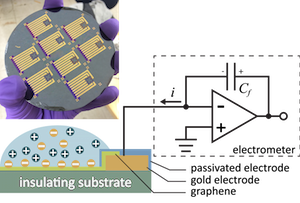
Measuring Spontaneous Faradaic Charge Transfer with Graphene Microelectrodes
Pico-Ampere-level of Fradaic current from ionic solution to graphene was measured at room temperature through a feedback capacitor. In the absence of bias, this spontaneous Faradaic current was driven at the graphene-solution interface. This technique paves the way for non-perturbative probing aquoues bio-systems.
The paper was picked by the Editors of Applied Physics Letters.
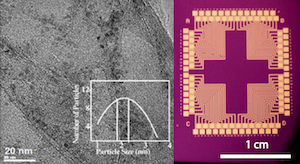
Detection of Breast Cancer Biomarker, HER3
Nanohybrid of graphene and platinum nanoparticle was used as conducting channels in field-effect transistors. Functionalized with genetically engineered antibody, the transistors demonstrated high sensibility (300 fg mL-1) for detection of HER3, the breast cancer biomarker.
The paper was picked by the Editors of Advanced Materials Interfaces.
Prior to 2016
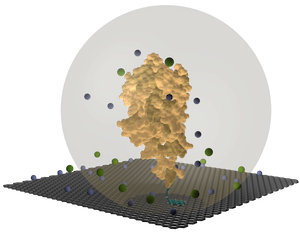
Accurate Protein Detection with Graphene Transistors
Liquid-based applications of biomolecule-decorated field-effect transistors (FETs) range from biosensors to in vivo implants. A critical scientific challenge is to develop a quantitative understanding of the gating effect of charged biomolecules in ionic solution and how this influences the readout of the FETs. To address this issue, we fabricated protein-decorated graphene FETs and measured their electrical properties, specifically the shift in Dirac voltage, in solutions of varying ionic strength. We found excellent quantitative agreement with a model that accounts for both the graphene polarization charge and ionic screening of ions adsorbed on the graphene as well as charged amino acids associated with the immobilized protein. The technique and analysis presented here directly couple the charging status of bound biomolecules to readout of liquid-phase FETs fabricated with graphene or other two-dimensional materials.
The paper can be found in Biosensors and Bioelectronics.
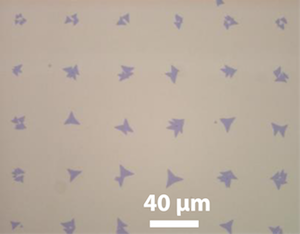
Seeded Growth of MoS2 at Designed Positions
By using a seeded growth technique, semiconducting MoS2 monolayers with mobility ~10 cm2V-1s-1 were deposited at desired positions on SiO2 substrate—a needed enabling step for scalable production of devices based on discontinuous two-dimensional materials.
The paper can be found in Nature Communications.
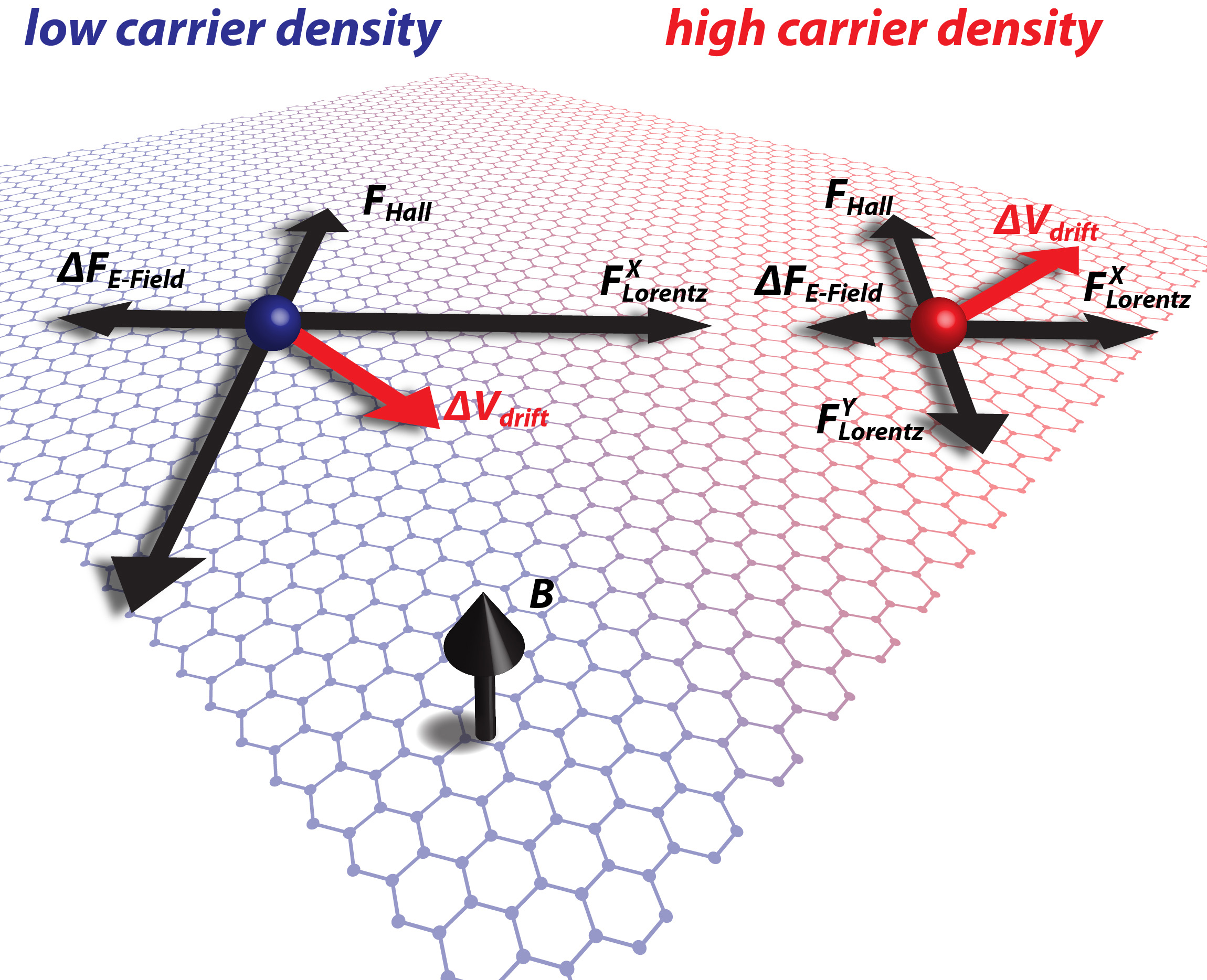
Disorder-Induced Quadratic Magnetoresistance in Two-Dimensional Systems
Quadratic magnetoresistance is often constrained only to systems with more than one electron band. I demonstrated that for single-band two-dimensional electron systems, quadraltic magnetoresistance can be induced by disorder of the systems.
The paper was highlighted in Editor's Suggestion of Physics Review Letters and Highlights in Nanotechnology.
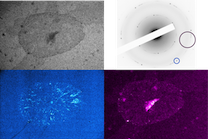
As-grown Nanocrystalline Impurities under Graphene
I discovered as-grown impurities with graphene synthesized on platinum via chemical vapor deposition, which are nanocrystalline graphene uncoverred by electron diffraction. I also proved that these impurites are grown UNDER a monolayer graphene.
The paper can be found in Journal of Applied Physics or downloaded here.

Counting Stacking Order of Graphene by TEM
I developed a methodlogy using the diffraction and dark-field technique of transmission electron microscopy (TEM) to measure the layer-number and stacking-order of graphene up to seven(7) layers.
The paper is one of the 20 most download papers of the month in Nano Letters.
